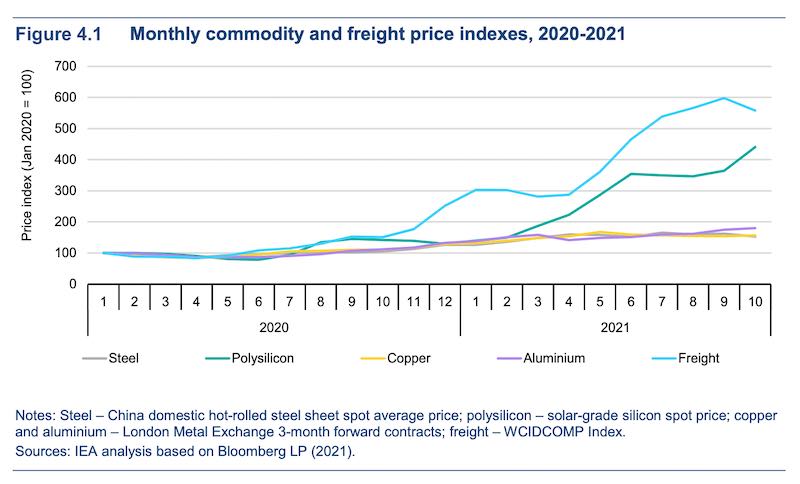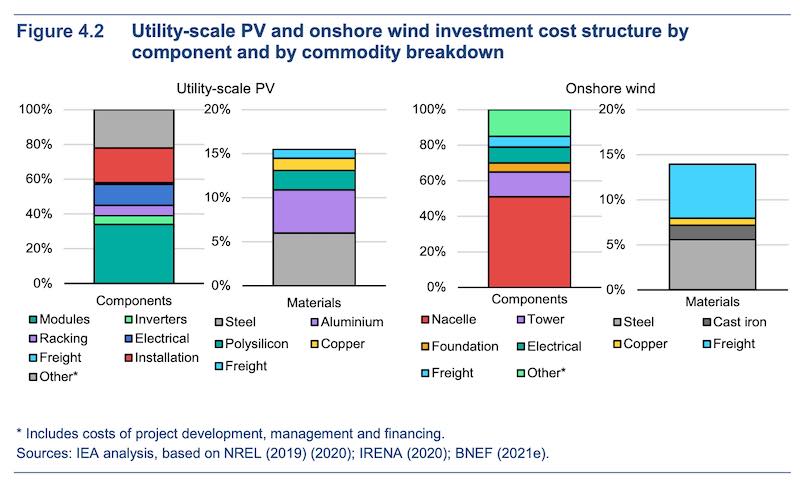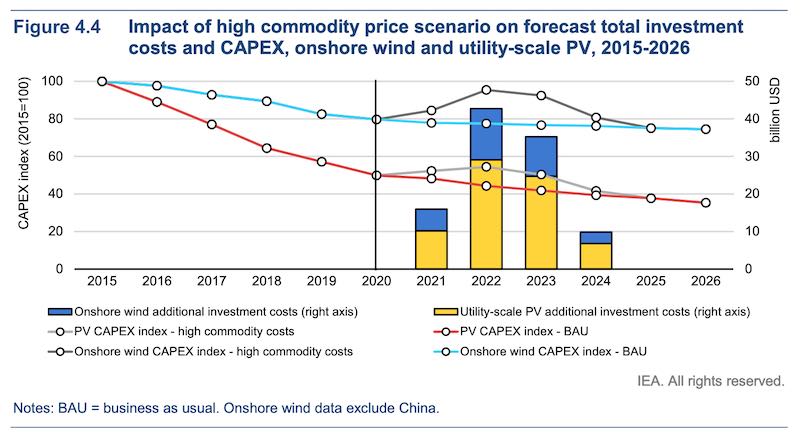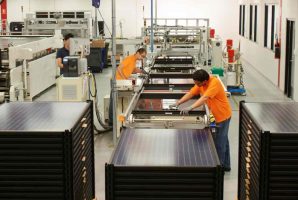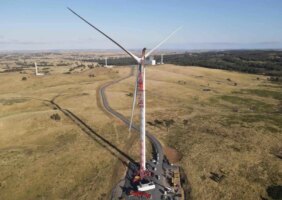Global commodity price shocks and shipping bottlenecks could delay 100GW of contracted renewable energy capacity and, should they continue through 2022, risk erasing three years of costs reductions for solar and five years for wind, a new report has warned.
The International Energy Agency Renewables 2021 report, an analysis and forecast of the global markets out to 2026, puts the world on track for another annual record year for added renewable energy capacity.
Almost 290GW of new renewable power will be commissioned in 2021, the report says – a 3% gain on 2020’s “already exceptional growth” thanks to a standout year for solar, which has accounted for more than half of the year’s growth, followed by wind and hydropower.
But at a time when this momentum needs desperately to build, the IEA sees some clouds on the horizon, in the shape of rising commodity, energy and shipping prices that have increased the cost of producing and transporting solar modules and wind turbines worldwide.
The report notes that since the beginning of 2020, prices for PV-grade polysilicon have more than quadrupled, steel has increased by 50%, aluminium by 80%, copper by 60%, and freight fees have risen six-fold.
All added up, this means that when compared with commodity prices in 2019, the IEA estimates that investment costs for utility-scale solar PV and onshore wind have wound up around 25% higher in 2021.
Certainly, this is the message the solar industry is sending in Australia. Concerns around rising costs and shrinking availability of panels have been dogging the utility-scale and rooftop sectors since Covid first started taking its toll in 2020.
The crisis is having a particularly big impact on the large-scale solar sector in Australia, with the industry rife with rumours of major project delays because of the delays in module deliveries.
But the rooftop sector is also feeling the pinch, with stories of installers “deperate for panels,” and of companies on the brink of receivership because of a lack of ability to keep up cash flow in an industry that’s renowned for low margins and high turnover.
Globally, the picture is no less daunting. The IEA says the prices of wind turbines and PV modules have increased by 10-25% depending on country and region – in Australia some sources have reported PV panels being 30-50% more expensive than they were in mid-2020.
“Solar PV’s largest cost component is the manufacturing and shipment of the module, which is directly affected by the price of polysilicon, steel and aluminium,” the report says.
“Inverter and electrical installation costs depend on the price of copper, while all components are impacted by increasing freight rates.
“Steel contributes the most to the final cost of wind installations, as large quantities are used in manufacturing and construction of the tower, nacelle and mechanical equipment.
“Freight can make up to 6% of total onshore wind investment costs, as the transport of bulky elements with specialised ships is required.”
Already, says the IEA, this reversal of the long-term trend of decreasing renewable energy costs is having the effect of erasing two to three years of cost reductions since 2018 from technology improvements. And the longer the price shocks go on, the more ground will be lost.
“If commodity prices remain high through 2022, three years of costs reductions for solar and five years for wind would be erased,” the report says.
The impact of these various headwinds is different for different parts of the supply chain, the report adds. For manufacturers, higher costs led to decreased equipment purchases in the first quarter of 2021.
Then, in the second quarter, as buyers adjusted to the new market conditions, growing demand coincided with a sharp increase in polysilicon and other commodity prices.
Higher costs have also resulted in wind equipment manufacturers reporting reduced margins, with some lowering their profit guidance by up to 50%. Further, many European and American wind turbine manufacturers have announced price increases ranging from 10% to 25% for new orders.
For developers, the rising price of project components and shipping has translated to contract price increases. The report gives the example of Brazil, where renewables auction prices have been 70% higher in 2021 compared to those held in 2019. (Although this still leaves them “substantially below” contracts for gas generation.)
The net affect of all this, says the report, is that around 100GW of contracted renewable energy capacity risks being delayed, as equipment manufacturers, installers and developers absorb cost increases in different ways, with some sectors more heavily affected than others.
And for investors, higher commodity and logistics costs could lead to renewables investment costs increasing by $US70 billion for solar and $US35 billion for onshore wind over the forecast period, affecting the pace of deployment.
On the brighter side, the IEA notes that should commodity and freight prices moderate in the near future, the cost reduction trend of wind and solar PV would continue, and the long-term impact on demand for solar and wind may be minimal.
Without further price increases, the report forecasts that developers could build about 95GW of additional solar PV and 25GW of further wind capacity over 2021-2026.
And the report also notes that whatever happens with renewables, the picture is no brighter for fossil fuels.
“The high commodity and energy prices we are seeing today pose new challenges for the renewable industry,” said IEA chief Fatih Birol in comments. “But elevated fossil fuel prices also make renewables even more competitive.”
The IEA report reminds readers that rising natural gas and coal prices have led average wholesale electricity prices to increase worldwide – to disastrous levels in some countries.
That means that even despite the high commodity and freight costs hitting renewables, higher natural gas and coal prices have still managed to improved the competitiveness of wind and solar PV.
For corporations, meanwhile, fixed-price renewable energy contracts have served as a hedge against higher spot market prices, increasing the value of such bilateral agreements, the report says.
And for governments, higher electricity prices are not translated into higher subsidies for wind and solar PV, as almost 90% of all wind and PV projects have long-term fixed-price PPAs either through FITs or CfDs.
For Australia, the IEA forecast an increase in renewable energy capacity by nearly 30GW, or 75%,
in the main case during the period 2021-2026, driven by state policies and Renewable Energy Zones and increased corporate buying – and lots more rooftop solar.
The IEA’s “accelerated case” sees nearly 30% higher additions than in its main case, with additional capacity coming from new auctions to achieve state-level targets or to procure capacity for REZs.
“Distributed PV additions should achieve higher growth if energy export tariffs do not significantly affect the overall economics of the installation,” the report says.
Lies, myths and greenwashing. Good independent journalism is time-consuming and costly. But small independent media sites like RenewEconomy have been excluded from the tens of millions of dollars being handed out to big media companies from the social media giants. To enable us to continue to hold government and business to account, to cut through the lies and the misinformation about the renewable transition, and to help expand our work, you can make a voluntary donation here to help ensure we can continue to offer the service free of charge and to as wide an audience as possible. Thank you for your support.


